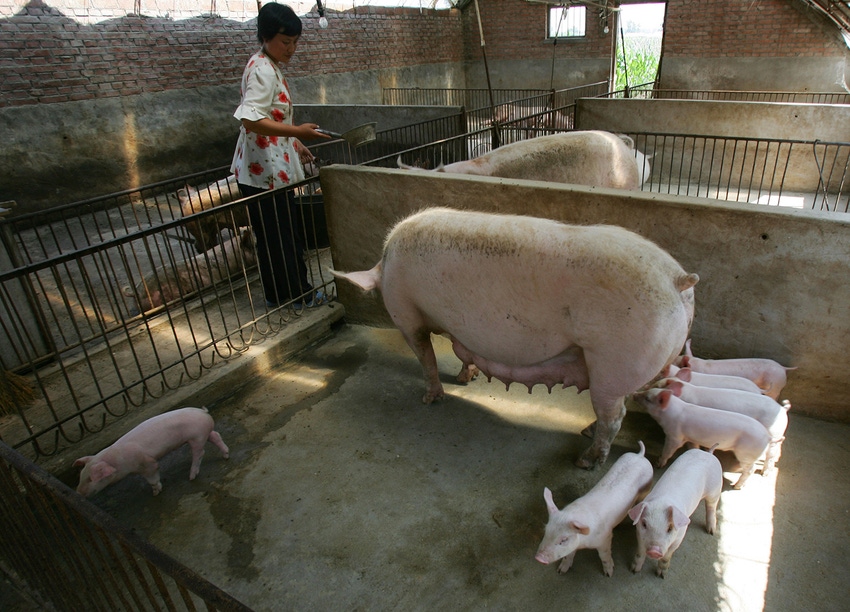ASF prevention: Should meat be removed from garbage feeding?
Feeding swill may seem far removed from the United States swine industry, but 1,073 licensed garbage feeders in 20 states and two territories are still practicing it.

Last week when China’s agriculture ministry said it would ban the practice of feeding kitchen waste to pigs after it was linked to a majority of the early cases of African swine fever in the country, my knee jerk reaction was “well, duh.” After all, when the provinces with outbreaks and neighboring provinces completely banned feeding swill to pigs, the epidemic was greatly reduced.
Feeding swill in the Far East may seem far removed from the United States swine industry, but 1,073 licensed garbage feeders in 20 states and two territories are still practicing it here. While it’s been speculated that steps may have been skipped in China in properly cooking plate waste before feeding to pigs, garbage feeding is a highly regulated practice in the United States under the Swine Health Protection Act.
“Garbage may be fed to swine only if it is treated to kill disease organisms. This helps prevent the potential spread of diseases.” says Joelle R. Hayden, public affairs specialist with the USDA Animal and Plant Health Inspection Service. “States may choose whether or not to allow garbage feeding in their states. Feeding garbage requires licensing by either the state, USDA or both, depending on the state’s regulations.”
There are currently 28 states and some territories that allow garbage feeding, though Hayden says some of those states do not have anyone currently licensed to feed garbage.
“It’s kind of a legacy program,” says Dave Pyburn, vice president of science and technology for the National Pork Board. “We used to feed many more hogs this way than we do now.”
Pyburn, who spent 13 years at the USDA in charge of swine health programs, is quite experienced with garbage feeding. While there, he oversaw the program and led trainings for state inspectors.
What does garbage feeding inspection ensure?
1. Cooked and uncooked product is kept separate so there is no cross contamination.
2. Equipment used for cooked product is not contaminated with uncooked product.
3. Garbage is being heated to a treatment level of 212 degrees Fahrenheit (boiling) for 30 minutes.
According to Pyburn, most of the U.S. garbage feeders are backyard type operations and many are located in North Carolina and Puerto Rico. These farms do not have a high amount of pigs and the pigs do not enter a larger slaughter plant or commercial production.
However, in Ohio, he visited several commercial sites where they were doing pressurized heating well above the temperature and time they needed to treat and were analyzing the garbage feed after cooking for nutrient content and balancing the ration with corn and other feedstuffs prior to feeding.
“The real concern that I had and that the inspectors had at some of these sites was the burn. Some cooking facilities at times looked like they were possibly inadequate to bring up to temperature of the garbage they were trying to feed,” Pyburn says. “In some cases, the heating equipment consisted of an emptied-out, top-removed steel barrel set over top of a wood fire. If you fill that barrel and try to light a wood fire underneath it, it would take a heck of a long time to probably never to actually reach 212 throughout.”
With the possibility of ASF knocking on our door, do we need to be concerned about our own garbage feeding operations?
Liz Wagstrom, chief veterinarian for the National Pork Producers Council, says while it’s not a large sector of the U.S. hog industry, these outside production herds have other risk factors than commercial herds, such as the ability to more easily spread disease between feral and domestic swine populations.
“We’re encouraging the industry to talk with their state, on a state-by-state basis, to see if they want to do something politically, to ask their states to ban garbage feeding,” Wagstrom says. “Clearly, if there is somebody who knows of an operation that is feeding plate waste and is unsure if they are licensed or are undergoing inspection, they obviously should consider reporting that and making sure there are not unlicensed garbage feeders out there.”
Pyburn says while the USDA does not have the authority to stop garbage feeding, they do recognize this as a risk for entry and further spread of ASF or any of the foreign animal diseases once they would get into the country. The department has already committed to review the inspection and licensing process, and if warranted, they would intensify or increase the level of inspections that are happening right now in that system.
“When we look at meat plate waste feeding, not bakery or dairy waste, I’m wondering if it isn’t time in those 28 states, where it is legal to do, if that is what we should be doing?” Pyburn says. “I’m not saying we should stop all garbage feeding, but maybe we need to look at that which is a risk, which is meat material, and either modify that or maybe not do that at all.”
Pyburn envisions modification involving a central facility, in charge of processing and heating the waste, and even possibly turning it into a pelleted product so producers could get nutritional content and be able to balance their rations as well.
“When you look at those countries like China that have broken with African swine fever, one of the first things they have tried to do is stop that meat or swill feeding so they don’t have a spread,” Pyburn says. “Maybe it’s something we should do before we have an issue come up.”
About the Author(s)
You May Also Like





